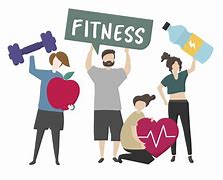29 Oct 2023
From Trash to Treasure

How to Reduce Food Waste and Promote Sustainability
Sustainable development is the process of meeting the needs of the present without compromising the ability of future generations to meet their own needs. One of the key challenges for sustainable development is to reduce food waste, which has significant environmental, social, and economic impacts.
Food waste refers to any food that is produced but not eaten by humans, either because it is discarded at the retail, food service, or household level, or because it is lost during production and supply chains. According to the UNEP Food Waste Index Report 2021, more than 930 million tonnes of food was wasted in 2019, representing 17 percent of all food available to consumers. This amount of food waste contributes to 8-10 percent of global greenhouse gas emissions, as well as land degradation, biodiversity loss, water pollution, and scarcity.
Reducing food waste can provide multiple benefits for both people and the planet. It can help mitigate climate change by avoiding unnecessary emissions and enhancing carbon sequestration. It can also improve food security and nutrition by increasing the availability and affordability of food, especially for the 690 million people who suffer from hunger and the three billion people who cannot afford a healthy diet. Moreover, it can save money for consumers, businesses, and governments, and create new opportunities for employment and innovation.
To achieve these benefits, countries need to take action to prevent and reduce food waste at all levels of the food system. The Sustainable Development Goals (SDGs) provide a global framework for this effort, particularly target 12.3, which aims to halve per capita global food waste at the retail and consumer levels and reduce food losses along production and supply chains by 2030. To track progress towards this target, countries need to measure their food waste using a consistent and reliable methodology, as proposed by the UNEP Food Waste Index Report 2021. By doing so, countries can generate evidence-based strategies and policies to tackle food waste and enhance sustainable development.
1. news.un.org
2. unep.org
3. un.org
4. worldbank.org
29 Sept 2023
FRESH FOOD FACTOR

Malabar spinach (Basella alba) is a tropical leafy green that is rich in vitamins A, C, iron, calcium, and antioxidants. It has a mild flavor and a mucilaginous texture, similar to okra. It can be eaten raw in salads or cooked in various dishes. It is also known as Indian spinach, Ceylon spinach, vine spinach, or climbing spinach.
To cook malabar spinach vegetable, you will need:
- 1 bunch of malabar spinach leaves and tender stems, washed and chopped
- 2 tablespoons of oil
- 1 teaspoon of mustard seeds
- 1/4 teaspoon of asafoetida
- 2 green chilies, slit
- A few curry leaves
- Salt to taste
- 1/4 teaspoon of turmeric powder
- 1/4 cup of grated coconut (optional)
The steps are:
1. Heat oil in a large skillet over medium-high heat. Add mustard seeds and wait until they splutter. Then add asafoetida, green chilies, and curry leaves. Fry for a few seconds.
2. Add the chopped malabar spinach and salt. Mix well and cook covered for about 15 minutes, stirring occasionally, until the leaves are wilted and tender.
3. Sprinkle turmeric powder and grated coconut if using. Mix well and cook for another 5 minutes, until the coconut is toasted.
4. Serve hot or cold as a side dish with rice, roti, or bread.
Some of the benefits of malabar spinach are:
- It nourishes, makes the body stout, purifies blood, rejuvenates and acts as aphrodisiac.
- It helps to prevent weakness of bones, anaemia, cardiovascular diseases and cancers of colon.
- It cools down the body and reduces inflammation.
- It improves digestion and relieves constipation.
1. www.wikipedia.com
2. www.google.com
28 Aug 2023
CLIMATE CHANGE ISSUES AROUND THE WORLD

• With the crisis happening for decades, one of the most notable issues is rising temperatures.
• This issue began in the 1880s when temperatures increased by 0.08 per decade. However, since 1981, temperatures have increased by 0.18 degrees per decade.
• This happened because of human activities involving fossil fuels, greenhouse gases, and deforestation. Fossil fuel is used for electrical purposes, and transportation, and its use is harming our environment more every day.
• This is why eco-friendly fossil fuel resources like wind, solar power, and solar panels are encouraged.
• Although we can't go without fossil fuel, reducing its usage can help reduce temperatures over time.
FOOD AND WATER INSECURITY
• As of June 2022, 385 million people in 82 countries are affected by food and water insecurity.
• Severe natural disasters like floods, storms, and droughts, impact the agricultural industry. Due to this, workers depend on the industry to feed their families and make a living suffer.
• Aside from food, if droughts like the El Nino weather pattern occur, the lack of proper water supplies can cause people to consume contaminated water or dehydrate.
• Areas like Southeast Asia, South Asia, and Sub-Saharan
Africa is suffering from poor agriculture due to climate
• If this doesn't change, by 2030, 43 million people in Africa will fall under the poverty line.
WHAT IS CLIMATE CHANGE?
• Climate change is a long-term change in our climate system. These range from shifts in hotter temperatures to severe storms, droughts, and more.
• Climate change has been around since the 1800s and is only getting worse with human activity.
HOW DOES IT AFFECT US?
Climate change deteriorates our air and water quality, which over time, increases the chances of respiratory diseases, weather injuries, allergies, and more.
STATISTICS
•Sea levels have risen 20 cm in the last century. 148 billion tons of ice is lost per year in Antarctica.
• The Arctic Sea ice is declining in thickness.
• 85% of the world is affected by climate change which is caused by humans.
• Close to 50 nations have agreed to be a part of the COP26 health movement at a climate conference.
CAN WE CONQUER CLIMATE CHANGE BEFORE IT TAKES OVER?
Climate change (including global warming) cannot be fixed overnight. However, small actions done daily around the world can slow its rate.
They can be:
• Political pressure - Using #ActNowSpeakUp, to get local politicians to create a solution to an environmental problem.
• Carpool or eco-friendly transportation.
• Sustainable shopping, ranging from fruits and vegetables to light bulbs. • Plant trees! (With permission from your city).
30 July 2023
WASTE SEGREGATION AT YOUR HOME!

Waste segregation is the process of separating waste into various categories, such as dry, wet, sanitary, and electronic waste. This makes the process of recycling and disposal easier for the authorities and also reduces the environmental impact of waste. Waste segregation at home is a simple and effective way to contribute to waste management and sustainable development.
Here are some ways of waste segregation at home:
1. Prepare separate containers for the different types of waste. You can use different colors, labels, or symbols to distinguish them. For example, you can use a green bin for wet waste, a blue bin for dry waste, a red bin for sanitary waste, and a yellow bin for electronic waste.
2. Wet waste is the biodegradable organic waste that comes from the kitchen, such as vegetable peels, fruit scraps, leftover food, tea leaves, coffee grounds, egg shells, etc. Wet waste can be composted at home or sent to a composting facility. Composting is a natural process that converts wet waste into nutrient-rich soil conditioners that can be used for gardening or farming. Composting reduces the amount of waste that goes to landfills and also helps in improving soil health and fertility.
3. Dry waste is non-biodegradable waste that can be recycled or reused, such as paper, plastic, metal, glass, cardboard, etc. Dry waste should be clean and dry before putting it in the bin. You can also further segregate dry waste into sub-categories, such as paper, plastic, metal, glass, etc. This will make it easier for the recyclers to sort and process them. Recycling dry waste saves natural resources, energy, and water, and also reduces greenhouse gas emissions and pollution.
4. Sanitary waste is personal hygiene-related waste that can pose health and environmental risks if not disposed of properly, such as diapers, sanitary napkins, tampons, condoms, bandages, etc. Sanitary waste should be wrapped in a paper bag or newspaper before putting it in the bin. Sanitary waste should not be mixed with other types of waste or flushed down the toilet. Sanitary waste should be sent to an incineration facility or a sanitary landfill where it can be safely destroyed or buried.
5. Electronic waste is the discarded electrical or electronic devices or parts that contain hazardous substances such as lead, mercury, cadmium, etc., such as batteries, mobile phones, laptops, TVs, printers, etc. Electronic waste should not be thrown in regular bins or dumped in landfills. Electronic waste should be collected separately and sent to an authorized e-waste collection center or dealer where it can be dismantled and recycled safely and responsibly. Recycling electronic waste prevents the release of toxic substances into the environment and also recovers valuable metals and materials.
By following these ways of waste segregation at home, we can reduce the amount of waste that goes to landfills and also help in conserving natural resources and protecting the environment.
1. indiatoday.inthebetterindia.com
2. awenest.in
3. wthfoods.ph
4. justeco.in
29 June 2023
MINDFULNESS MATTERS

Mindfulness is the practice of purposely bringing one's attention to the present-moment experience without evaluation, judgment, or distraction. It is a skill that can be developed through meditation or other training and can be applied to various aspects of life, such as work, relationships, health, and well-being.
Mindfulness has many benefits for the mind and body, as well as for society and the environment. Some of the benefits of mindfulness are:
1. It improves cognitive ability by enhancing attention, memory, learning, and problem-solving.
2. It slows brain aging by increasing grey matter density and reducing inflammation in the brain.
3. It reduces stress, anxiety, and depression by regulating emotions, increasing resilience, and promoting self-compassion.
4. It increases a sense of well-being by fostering positive emotions, gratitude, and happiness.
5. It helps with pain management by changing the perception of pain and reducing its emotional impact.
6. It improves the quality of life for those living with chronic conditions by enhancing coping skills, self-care, and social support.
7. It improves interpersonal relationships by improving communication, empathy, and conflict resolution.
8. It fosters pro-social behavior by increasing altruism, cooperation, and compassion.
9. It supports environmental sustainability by increasing awareness of the interdependence of all living beings and reducing consumption and waste.
There are many ways to practice mindfulness in daily life, such as:
1. Reducing screen time: Screen time can be a source of distraction, stress, and information overload. Reducing screen time can help us focus on the present moment and connect with ourselves and others more deeply.
2. Gardening: Gardening is a mindful activity that involves caring for plants, observing their growth, and enjoying their beauty. Gardening can also provide physical exercise, fresh air, and exposure to nature.
3. Practicing stillness: Practicing stillness means finding a quiet place and time to sit or lie down comfortably and simply be aware of the breath, the body, and the surroundings. Practicing stillness can help us calm the mind, relax the body, and cultivate awareness.
4. Meditation: Meditation is a formal practice of mindfulness that involves focusing on a chosen object of attention, such as the breath, a sound, a word, or an image. Meditation can help us train our attention, deepen our concentration, and enhance our insight.
5. Deep breathing exercises: Deep breathing exercises are simple techniques that involve inhaling and exhaling slowly and deeply through the nose or mouth. Deep breathing exercises can help us regulate our nervous system, lower our blood pressure, and reduce stress.
6. Journaling: Journaling is a mindful activity that involves writing down our thoughts, feelings, experiences, and reflections. Journaling can help us express ourselves, process our emotions, clarify our goals, and gain perspective.
7. Introspection exercises: Introspection exercises are mindful activities that involve asking ourselves questions that prompt self-awareness, self-inquiry, and self-improvement. Introspection exercises can help us understand ourselves better, identify our strengths and weaknesses, and make positive changes.
8. Sitting idle: Sitting idle means doing nothing in particular and letting go of any expectations or agendas. Sitting idle can help us enjoy the present moment without any pressure or judgment.
9. Teaching others about mindfulness: Teaching others about mindfulness means sharing our knowledge, experience, and enthusiasm about mindfulness with others who may benefit from it. Teaching others about mindfulness can help us deepen our practice, strengthen our social bonds, and spread the benefits of mindfulness to others.
Mindfulness is a simple yet powerful practice that can transform our lives for the better. By practicing mindfulness regularly and consistently, we can cultivate a more mindful way of living that enhances our well-being and happiness.
1. mindful.org
2. healthline.com
3. en.wikipedia.org
4. greatergood.berkeley.edu
31 May 2023
LESS IS MORE

A minimalist lifestyle is a way of living that focuses on what is essential and eliminates what is unnecessary. It is based on the idea that less is more and that by having fewer possessions, commitments, and distractions, one can have more time, space, and freedom to pursue what truly matters.
A minimalist lifestyle can have many benefits for the individual and the society, such as:
1. It reduces stress and anxiety by simplifying choices, routines, and environments.
2. It improves well-being and happiness by fostering gratitude, contentment, and mindfulness.
3. It saves money and resources by avoiding wasteful consumption and encouraging intentional spending.
4. It protects the environment by reducing the ecological footprint and the impact of pollution, waste, and greenhouse gas emissions.
5. It enhances creativity and productivity by clearing mental clutter and enhancing focus and concentration.
6. It strengthens relationships by prioritizing quality over quantity and spending more time and attention on the people who matter.
There are many ways to practice a minimalist lifestyle, depending on one's preferences, goals, and circumstances. Some examples are:
1. Decluttering the home and the workspace by keeping only what is useful, beautiful, or meaningful, and donating, selling, or recycling the rest.
2. Reducing screen time by limiting the use of digital devices and social media, and engaging in more offline activities, such as reading, writing, or hobbies.
3. Gardening by growing one's food, flowers, or herbs, and enjoying the benefits of nature, exercise, and nutrition.
4. Practicing stillness by finding a quiet place and time to meditate, breathe deeply, or simply be aware of the present moment.
5. Journaling by writing down one's thoughts, feelings, experiences, and reflections, and gaining clarity, insight, and perspective.
6. Sitting idly by doing nothing in particular and letting go of any expectations or agendas, and enjoying the present moment without any pressure or judgment.
7. Teaching others about minimalism by sharing one's knowledge, experience, and enthusiasm about minimalism with others who may benefit from it.
A minimalist lifestyle is not a rigid set of rules or a one-size-fits-all solution. It is a personal choice and a journey of discovering what is essential for one's happiness and fulfillment.
1. minimalism. co
2. bbc.com
3. oprahdaily.com
4. theminimalistvegan.com
5. simplyfiercely.com
30 April 2023
EXERCISE YOUR WAY TO SUCCESS

Exercising is any physical activity that makes your muscles work and requires your body to burn calories. There are many types of exercise, such as yoga, sports, running, walking, cycling, swimming, etc. Exercising regularly can have many benefits for your health and well-being.
Some of the benefits of exercise are:
1. It can help you lose weight or maintain a healthy weight by increasing your metabolic rate and burning more calories. It can also prevent weight gain by reducing your appetite and regulating your hormones.
2. It can improve your cardiovascular health by strengthening your heart, lowering your blood pressure, and improving your blood circulation. It can also reduce your risk of heart disease, stroke, and high cholesterol.
3. It can enhance your respiratory health by improving your lung function and capacity and reducing your risk of asthma and chronic obstructive pulmonary disease (COPD).
4. It can boost your immune system by stimulating the production of antibodies and white blood cells and reducing inflammation and oxidative stress. It can also lower your risk of infections, colds, and flu.
5. It can strengthen your muscles and bones by increasing your muscle mass and density and enhancing your flexibility and balance. It can also prevent or delay the onset of osteoporosis, arthritis, and sarcopenia.
6. It can improve your brain health by increasing the flow of oxygen and nutrients to the brain and stimulating the growth of new brain cells and connections. It can also enhance your memory, learning, concentration, and creativity.
7. It can make you feel happier by releasing endorphins, serotonin, and norepinephrine, which are chemicals that improve your mood and reduce your perception of pain. It can also lower your stress, anxiety, and depression levels.
8. It can help you sleep better by regulating your circadian rhythm, which is your natural sleep-wake cycle. It can also improve the quality and duration of your sleep, and reduce insomnia and sleep apnea.
Exercising is one of the best things you can do for yourself. It can benefit every aspect of your life, from your physical to your mental to your emotional well-being. The recommended amount of exercise for adults is at least 150 minutes of moderate-intensity or 75 minutes of vigorous-intensity aerobic activity per week, along with muscle-strengthening activities on two or more days per week. However, any amount of exercise is better than none, so start small and gradually increase the frequency, intensity, and duration of your exercise sessions.
1. bing.com
2. microsoftstart.msn.com
3. mayoclinic.org
4. healthline.com
5. webmd.com
29 March 2023
THE NATURAL CONNECTION

Spending time with nature means being outdoors and enjoying the natural environment, such as parks, beaches, lakesides, riversides, forests, mountains, etc. Spending time with nature can have many benefits for your mental health and well-being, especially in contrast to staying online and being exposed to digital devices and artificial light.
Some of the benefits of spending time with nature are:
1. It can reduce stress and anxiety by lowering your blood pressure, heart rate, and cortisol levels, which are associated with the stress response. It can also increase your endorphin levels and dopamine production, which are linked to positive emotions and happiness.
2. It can improve your mood and well-being by fostering gratitude, contentment, and mindfulness. It can also reduce symptoms of depression by enhancing your serotonin levels, which are involved in mood regulation.
3. It can boost your cognitive abilities by improving your attention, memory, learning, and problem-solving skills. It can also restore your capacity for concentration and focus by reducing mental fatigue and distraction.
4. It can enhance your creativity and productivity by stimulating your imagination, inspiration, and innovation. It can also increase your motivation and engagement by providing you with a sense of challenge, curiosity, and achievement.
5. It can strengthen your relationships by improving your communication, empathy, and cooperation skills. It can also reduce your feelings of isolation and loneliness by providing you with social support and belonging.
6. It can support your environmental sustainability by increasing your awareness of the interdependence of all living beings and the impact of human activities on nature. It can also reduce your consumption and waste by encouraging you to adopt a simpler and more mindful lifestyle.
Spending time with nature is one of the best things you can do for yourself and the planet. It can benefit every aspect of your life, from your physical to your mental to your emotional well-being. The recommended amount of time in nature for adults is at least 120 minutes per week, but any amount is better than none. You can spend time in nature in various ways, such as walking, hiking, cycling, swimming, gardening, camping, or simply sitting and observing. The key is to be present and mindful of your surroundings and appreciate the beauty and wonder of nature.
1. healthline.com
2. apa.org
3. wellness.mcmaster.ca
4. lifegram.org
5. heart.org
26 Feb 2023
THE LOCAL ADVANTAGE

Buying local means purchasing goods and services that are produced or offered within your own city, state, or region. Buying local can have many benefits for you, your community, and the planet. Here are some of the reasons why you should consider buying local whenever possible:
1. Buying local supports the local economy. When you buy from local businesses, you help them generate income and create or retain jobs. You also help them pay local taxes, which can improve public services and infrastructure in your area. Local businesses often source from other local businesses, creating a multiplier effect that boosts the overall economic activity and prosperity of your region
2. Buying local reduces environmental impact. When you buy from local businesses, you reduce the transportation costs and emissions associated with your goods. Local goods travel shorter distances and use less fuel and packaging than goods shipped from far away. This helps conserve natural resources, reduce air pollution, and mitigate climate change. Local businesses also tend to have more environmentally friendly practices, such as using renewable energy, recycling waste, or organic farming.
3. Buying local enhances quality and safety. When you buy from local businesses, you have more information and control over the quality and safety of your goods. You can see how they are produced, processed, or prepared, and avoid potentially harmful chemicals, additives, or by-products. You can also trust that they meet the regional and national standards and regulations for health and hygiene. Local goods are usually fresher, tastier, and more nutritious than goods that have been stored or transported for long periods of time.
4. Buying local fosters social and cultural diversity. When you buy from local businesses, you support the social and cultural diversity of your community. You help preserve the unique identity, heritage, and traditions of your region, and celebrate the creativity and innovation of your fellow citizens. You also strengthen your social bonds and sense of belonging by interacting with local producers, sellers, and consumers. You can learn more about their stories, values, and perspectives, and share your own.
5. Buying local promotes personal well-being. When you buy from local businesses, you promote your own well-being and happiness. You can enjoy the satisfaction of knowing that you are making a positive difference in your community and the planet. You can also benefit from the physical and mental health advantages of consuming fresh, natural, and wholesome goods. You can also discover new products, services, or experiences that enrich your life and match your preferences and needs.
Buying local is a simple yet powerful way to make a positive impact on yourself and others. By choosing to buy locally whenever possible, you can contribute to a more sustainable, prosperous, diverse, and healthy world.
1. well.org
2. greenbusinessbureau.com
3. sustaincase.com
4. greenbusinessbureau.com
29 Jan 2023
FASHION WITH A CONSCIENCE

Sustainable fashion is a movement and a process that aims to create and consume clothes in a way that respects the environment, the people, and the animals involved. Sustainable fashion is not only about choosing organic cotton or recycled polyester, but also about reducing waste, pollution, and carbon emissions, as well as ensuring fair wages, safe working conditions, and animal welfare.
Sustainable fashion is important because the fashion industry is one of the most polluting and exploitative industries in the world. According to the United Nations, the fashion industry is responsible for 10 percent of global greenhouse gas emissions, 20 percent of global wastewater, and 85 percent of textiles that end up in landfills or incinerators every year. The fashion industry also consumes huge amounts of water, energy, and chemicals, and contributes to deforestation, soil degradation, and biodiversity loss.
Moreover, the fashion industry is notorious for its human rights and animal rights violations. Millions of garment workers, mostly women, and children, are subjected to low wages, long hours, unsafe and unhealthy environments, and physical and verbal abuse. Many of them work in sweatshops or factories that collapse or catch fire, causing injuries or deaths. Millions of animals are also killed or harmed for their fur, leather, wool, silk, or feathers, often in cruel ways.
Therefore, sustainable fashion is not only a trend or a choice but a necessity and a responsibility. By choosing sustainable fashion brands that use eco-friendly materials and practices, that pay fair wages and respect workers' rights, and avoid animal products and cruelty, we can make a positive difference for ourselves and others. We can also adopt sustainable habits such as buying less but better quality clothes, repairing or upcycling old clothes, swapping or donating unwanted clothes, and washing clothes less frequently and at lower temperatures.
Sustainable fashion is a way to express our style and personality without compromising our values and ethics. It is a way to celebrate our creativity and diversity without harming our planet and its inhabitants. It is a way to join a stylish, earth-conscious community that supports sustainable choices together.
1. vogue. in
2. thevou.com
3. en.wikipedia.org
4. cnn.com
27 Dec 2022
ECO-FRIENDLY TRANSPORT: HOW TO TRAVEL GREEN AND SAVE MONEY

Public or eco-friendly transport is a green mode of transport that can reduce the environmental impact of our daily commute. Public transport, such as buses, trains, metros, etc., can carry many people at once, reducing the number of cars on the road and the emissions they produce. Eco-friendly transport, such as walking, cycling, carpooling, etc., can also lower the use of fossil fuels and the pollution they cause.
Public or eco-friendly transport can have many benefits for ourselves and others, such as:
1. It can save money and resources by avoiding the costs of fuel, parking, maintenance, etc., associated with driving a personal vehicle. It can also reduce the dependence on imported oil and the risks of price fluctuations.
2. It can improve health and well-being by providing physical activity, reducing stress, and enhancing mood. Walking and cycling can help prevent obesity, diabetes, heart disease, and other chronic conditions. Taking public transport can also reduce exposure to traffic noise and accidents.
3. It can create jobs and support the local economy by investing in sustainable infrastructure, services, and technologies. It can also increase access to education, employment, health care, and other opportunities for people who do not own a car or cannot drive.
4. It can protect the environment and fight climate change by reducing greenhouse gas emissions, air pollution, water pollution, and waste. It can also conserve land, energy, and water resources that are used for road construction and maintenance.
5. It can foster social and cultural diversity by promoting social interaction, cooperation, and inclusion among people from different backgrounds, ages, abilities, etc. It can also encourage awareness and appreciation of the natural and cultural heritage of the places we visit.
Public or eco-friendly transport is a way to travel responsibly and ethically without compromising our convenience and comfort. It is a way to show our care and respect for ourselves, others, and the planet. It is a way to join a green community that celebrates sustainable choices together.
1. environment. co
2. transportation.ucla.edu
3. almostzerowaste.com
28 Nov 2022
A GUIDE TO ECO-FRIENDLY CONSUMPTION

Sustainability is a concept that refers to meeting the needs of the present without compromising the ability of future generations to meet their own needs. It involves balancing environmental, social, and economic aspects of human activity and development. One of the ways to achieve sustainability is to use and promote sustainable products and brands that are environmentally friendly and socially responsible.
Sustainable products are products that have a minimal negative impact on the environment and society throughout their life cycle, from production to consumption to disposal. They are made from renewable, recycled, or biodegradable materials, use less energy and water, generate less waste and emissions, and have a longer lifespan. Sustainable products also consider the social and ethical aspects of production, such as fair trade, labor rights, animal welfare, and human health.
Sustainable brands are brands that offer sustainable products and services, as well as demonstrate their commitment to sustainability in their business practices, values, and communication. They aim to create positive value for their customers, employees, stakeholders, communities, and the planet. They also educate and inspire their consumers to adopt more sustainable lifestyles and choices.
Some examples of sustainable products and brands are:
1. Cosmetics: Lush is a brand that offers handmade cosmetics that are cruelty-free, vegan, and natural. They use minimal packaging, recycle materials, and support various environmental and social causes.
2. Dental: Bite is a brand that offers vegan, cruelty-free, and plastic-free toothpaste tablets that are made from natural ingredients. They also use compostable packaging and carbon-neutral shipping.
3. Hygiene: Who Gives A Crap is a brand that offers toilet paper, tissues, and paper towels that are made from bamboo or recycled paper. They also donate 50% of their profits to build toilets and improve sanitation in developing countries.
4. Personal care: Ethique is a brand that offers solid bars of shampoo, conditioner, body wash, moisturizer, and more that are plastic-free, vegan, cruelty-free, palm oil-free, and compostable. They also plant trees, offset their carbon emissions, and support various charities.
5. Grooming: Leaf Shave is a brand that offers metal razors that are durable, reusable, and recyclable. They also use plastic-free packaging and donate 1% of their revenue to environmental non-profits.
6. Skincare: Tata Harper is a brand that offers organic, natural, and nontoxic skincare products that are made from farm-fresh ingredients. They also use glass bottles, recycled materials, and renewable energy in their production.
7. Food: Patagonia Provisions is a brand that offers organic, regenerative, and fair trade food products that are sourced from farmers who practice sustainable agriculture. They also support various initiatives to restore ecosystems, protect biodiversity, and fight climate change.
8. Beverages: Numi Organic Tea is a brand that offers organic, fair trade, and non-GMO tea products that are made from pure ingredients. They also use biodegradable packaging, offset their carbon footprint, and fund various projects to improve water access, education, health care, and women's empowerment in their sourcing communities.
9. Stationery: Onyx & Green is a brand that offers eco-friendly stationery products that are made from bamboo.
1. sustainabilitymag.com
2. countryliving.com
3. brownliving.in
4. rd.com
29 Oct 2022
LOW CARBON MATERIALS FOR A SUSTAINABLE FUTURE

Climate change is one of the most urgent challenges facing humanity and the planet. To limit the global temperature rise to 1.5°C, as recommended by the Paris Agreement, we need to drastically reduce our greenhouse gas emissions from all sectors, including the construction industry. The construction industry is responsible for about 40% of global energy consumption and 36% of CO2 emissions¹. A significant part of these emissions comes from the production and use of building materials, such as concrete, steel, and cement. These materials have a high embodied carbon footprint, meaning that they require a lot of energy and resources to produce, transport, and dispose of, and they release a lot of carbon dioxide and other pollutants into the atmosphere.
One way to reduce the environmental impact of the construction industry is to use low-carbon materials instead of traditional ones. Low-carbon materials are those that have a lower embodied carbon footprint than traditional materials². This means that they require less energy and resources to produce and generate fewer greenhouse gas emissions. Low carbon materials can include anything from recycled plastics to bamboo and wool insulation³. By using low-carbon materials, we can not only reduce our emissions, but also save money, improve our health and well-being, and create more resilient and durable buildings.
There are many benefits of using low-carbon materials for the construction industry and society as a whole. Some of these benefits are:
Emission Reduction: Low-carbon materials can help us achieve our climate goals by reducing the amount of greenhouse gases that are released into the atmosphere during the life cycle of buildings. For example, using wood instead of concrete can save up to 4 tonnes of CO2 per cubic meter. Some low-carbon materials can even store carbon in their structure, such as biochar, which is made by burning biomass without oxygen. This can create a negative carbon balance, meaning that more carbon is removed from the atmosphere than emitted.
Cost Savings: Low-carbon materials can also help us save money by reducing the energy and maintenance costs of buildings. For example, using natural insulation materials such as wool or hemp can improve the thermal performance and comfort of buildings, reducing the need for heating and cooling. Some low-carbon materials can also be cheaper to produce and transport than traditional ones, such as recycled plastics or local materials.
Health and Well-being: Low-carbon materials can also improve our health and well-being by creating healthier indoor environments and reducing exposure to harmful substances. For example, using natural or biodegradable materials can reduce the amount of waste and pollution that is generated by buildings. Some low-carbon materials can also enhance the aesthetic and acoustic quality of buildings, such as wood or bamboo.
Resilience and Durability: Low-carbon materials can also increase the resilience and durability of buildings by making them more adaptable to changing conditions and more resistant to natural hazards. For example, using modular or prefabricated components made from low-carbon materials can allow for faster and easier construction and repair. Some low-carbon materials can also have superior mechanical properties than traditional ones, such hempcrete or bamboo.
In conclusion, low-carbon materials are a key solution for reducing the environmental impact of the construction industry and creating a more sustainable future. By using low-carbon materials instead of traditional ones, we can reduce our greenhouse gas emissions, save money, improve our health and well-being, and create more resilient and durable buildings. Therefore, we should encourage and support the development and adoption of low-carbon materials in the construction sector and beyond
1. lowcarbonmaterials.com
2. dezeen.com
3. usgbc.org
30 Aug 2022
LET’S SEE HOW UNDERWATER WORLD IS DOING IN PANDEMIC

The Covid-19 pandemic has affected almost every aspect of human life, but what about life underwater? How has the virus impacted the health and sustainability of the oceans and the marine organisms that depend on them? This essay will explore some of the positive and negative effects of Covid-19 on life underwater, focusing on three main areas: fishing, pollution, and conservation.
One of the most obvious impacts of Covid-19 on life underwater is the reduction of fishing activities. Due to lockdowns, travel restrictions, market closures, and health risks, many fishing vessels have stopped or reduced their operations. This has led to a decrease in fishing pressure on some fish stocks, which could allow them to recover from overexploitation. For example, a study found that the catch of Atlantic bluefin tuna in the Mediterranean Sea declined by 50% in 2020 compared to 2019. However, not all fish stocks may benefit from reduced fishing. Some fish species, such as sharks and rays, are more vulnerable to illegal, unreported, and unregulated (IUU) fishing, which may increase as a result of weaker monitoring and enforcement during the pandemic. Moreover, the reduced fishing activities have also affected the livelihoods and food security of millions of people who depend on fishing for income and nutrition.
Another impact of Covid-19 on life underwater is the change in pollution levels. On one hand, the pandemic has led to a decrease in some sources of pollution, such as greenhouse gas emissions, industrial effluents, and tourism waste. This could have positive effects on the water quality and climate resilience of the oceans. For example, a study found that global CO2 emissions declined by 8.8% in the first half of 2020 compared to the same period in 20193. On the other hand, the pandemic has also increased some sources of pollution, such as medical waste and single-use plastics. These items can pose serious threats to marine life if they end up in the oceans. For example, masks and gloves can entangle or suffocate animals, while plastic fragments can be ingested or accumulate toxins.
A third impact of Covid-19 on life underwater is the influence on conservation efforts. On one hand, the pandemic has created some opportunities for conservation, such as increased public awareness, scientific research, and policy action. For example, many people have become more interested in learning about and protecting marine life during the lockdowns. Some researchers have also taken advantage of the reduced human activity to study the behavior and recovery of marine animals. Moreover, some governments have announced new commitments or initiatives to conserve marine biodiversity and combat climate change. On the other hand, the pandemic has also posed some challenges to conservation, such as reduced funding, disrupted management, and delayed action. For example, many conservation projects and organizations have faced financial difficulties or operational constraints due to the pandemic. Some marine protected areas have also suffered from reduced patrolling and enforcement. Furthermore, some international negotiations and agreements on ocean issues have been postponed or canceled due to the pandemic.
In conclusion, Covid-19 has had both positive and negative effects on life underwater. The pandemic has affected fishing activities, pollution levels, and conservation efforts in different ways. While some impacts may be temporary or reversible, others may be long-lasting or irreversible. Therefore, it is important to monitor and evaluate the impacts of Covid-19 on life underwater and take appropriate actions to mitigate the negative effects and enhance the positive ones.
1. un.org
2. csis.org
3. forbes.com
31 July 2022
SUSTAINABILITY AND MONTHLY CYCLES

Throughout a life of a person who menstruates, 1000-1500 pads and tampons are estimated to have been thrown away, generating tons of waste for our planet. Around 12 billion pads and 7 billion tampons are disposed of each year in the USA.
Not only do these products get thrown into the sea, posing harm to marine creatures, but the materials for such products such as microplastics, take centuries and centuries to fully decompose. If this continues, it will most certainly pose an even bigger threat to our environment and add to the escalating issue of water pollution as well as global warming.
Disposable period pads are laden with chemicals such as perfume and plastic like polyethylene and polyacrylate gels. The chemicals may cause problems such as rashes, infertility, and itchiness. The plastic in the pads is non-biodegradable and takes up to dozens of years to be completely broken. When incinerated, toxic dioxins and greenhouse gases are released into the atmosphere. Therefore, by using sustainable period products, not only is it more affordable and convenient, but it is also more eco- friendly.
We can use the following eco-friendly products!
1. Menstrual cups-
•Around $200 and
•They last for at least 2 years
•Large variety of sizes and textures
•High capacity - up to 6omL light-weight
•Hypoallergenic
•Low maintenance
•Lower chance of leaking because the pad is built into the gusset
2. Period panties and boxers -
•It's convenient for people who like to work out since it prevents the slipping of pads.
•How it works: It performs the same job as a tampon and pad by absorbing menstrual fluid but the advantage is that they are washable. Furthermore, they can be worn and reused for up to 2 years.
•Can carry more menstrual fluid than tampons and pads!
3. Reusable pads-
•Made of cloth and bamboo fleece
•Very soft and comfortable to wear
•Works for 3-5 years
•Reusable sanitary pads work the same as normal pads but are more sustainable and environmentally friendly
•We can repurpose worn-out reusable pads into other items such as cleaning rags.
4. Organic and biodegradable tampons-
•Normal tampons are made from a mixture of plastic, cotton, and rayon.
The string is made from plastic, polystyrene.
•Chemicals and toxins used in tampons will get soaked up by the earth or get released into the air, causing air and pollution.
•Uses most plastic so it's deemed the worst harmful product to our environment.
•Advantage: Biodegradable as they're made from 100% cotton and recyclable.
For you and the environment, sustainable period pads are important because of the toxins in them and the toxins they add to the environment.














